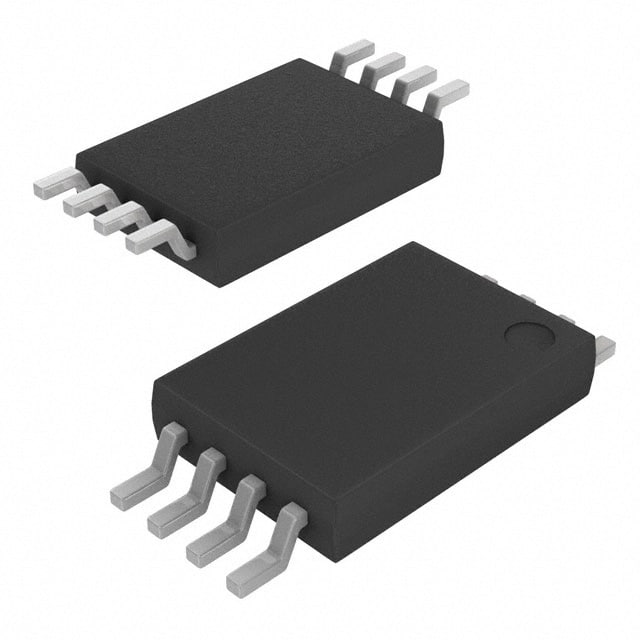Lihat spesifikasi untuk detail produk.

MAX3241ECTJ+ - English Editing Encyclopedia Entry
Product Overview
Category: Integrated Circuit (IC)
Use: MAX3241ECTJ+ is a high-speed, low-power transceiver designed for RS-232 and V.28 communication interfaces.
Characteristics: - High-speed data rates up to 1Mbps - Low power consumption - Wide operating voltage range: 3V to 5.5V - Supports multiple power supply options - Robust ESD protection - Small package size for space-constrained applications
Package: MAX3241ECTJ+ is available in a compact 32-pin TQFN package.
Essence: This IC serves as a bridge between RS-232/V.28 communication interfaces and microcontrollers or other digital devices, enabling reliable serial communication.
Packaging/Quantity: The MAX3241ECTJ+ is typically sold in reels containing 2500 units per reel.
Specifications
- Supply Voltage Range: 3V to 5.5V
- Data Rate: Up to 1Mbps
- Operating Temperature Range: -40°C to +85°C
- Number of Pins: 32
- Package Type: TQFN
Pin Configuration
The MAX3241ECTJ+ has the following pin configuration:
Pin 1: NC
Pin 2: GND
Pin 3: C2-
Pin 4: C2+
Pin 5: VCC
Pin 6: T2OUT
Pin 7: R2IN
Pin 8: R2OUT
Pin 9: T2IN
Pin 10: SHDN
Pin 11: R1OUT
Pin 12: R1IN
Pin 13: T1IN
Pin 14: T1OUT
Pin 15: VCC
Pin 16: C1+
Pin 17: C1-
Pin 18: GND
Pin 19: NC
Pin 20: NC
Pin 21: NC
Pin 22: NC
Pin 23: NC
Pin 24: NC
Pin 25: NC
Pin 26: NC
Pin 27: NC
Pin 28: NC
Pin 29: NC
Pin 30: NC
Pin 31: NC
Pin 32: NC
Functional Features
- Transmits and receives RS-232/V.28 signals
- Supports full-duplex communication
- Provides ESD protection for robustness
- Low power consumption for energy-efficient operation
- Wide operating voltage range for compatibility with various systems
Advantages and Disadvantages
Advantages: - High-speed data transmission - Small package size for space-constrained applications - Wide operating voltage range allows flexibility in system design - Robust ESD protection ensures reliability
Disadvantages: - Limited to RS-232/V.28 communication interfaces - May require additional level shifting for compatibility with other interface standards
Working Principles
The MAX3241ECTJ+ operates by converting the logic-level signals from a microcontroller or digital device into RS-232/V.28 compatible signals. It uses internal circuitry to transmit and receive data over the RS-232/V.28 interface, ensuring reliable communication between devices.
Detailed Application Field Plans
The MAX3241ECTJ+ is commonly used in various applications, including: - Industrial automation systems - Point-of-sale terminals - Networking equipment - Medical devices - Consumer electronics
Alternative Models
Here are some alternative models that can be considered as alternatives to the MAX3241ECTJ+: - MAX3232ECP+ - MAX3221ECPWR - MAX3237EIDBR - MAX3243EIPWR
These models offer similar functionality and can be used as replacements depending on specific requirements.
In conclusion, the MAX3241ECTJ+ is a high-speed, low-power transceiver designed for RS-232 and V.28 communication interfaces. It offers reliable serial communication, robust ESD protection, and compatibility with various systems. With its small package size and wide operating voltage range, it is suitable for a wide range of applications in different industries.
Sebutkan 10 pertanyaan dan jawaban umum terkait penerapan MAX3241ECTJ+ dalam solusi teknis
Sure! Here are 10 common questions and answers related to the application of MAX3241ECTJ+ in technical solutions:
Q1: What is the MAX3241ECTJ+? A1: The MAX3241ECTJ+ is a high-speed, low-power RS-232 transceiver IC.
Q2: What is the operating voltage range of MAX3241ECTJ+? A2: The operating voltage range of MAX3241ECTJ+ is from 3.0V to 5.5V.
Q3: What is the maximum data rate supported by MAX3241ECTJ+? A3: The maximum data rate supported by MAX3241ECTJ+ is 250kbps.
Q4: Can I use MAX3241ECTJ+ for both transmitting and receiving data? A4: Yes, MAX3241ECTJ+ can be used for both transmitting and receiving data.
Q5: Does MAX3241ECTJ+ support full-duplex communication? A5: Yes, MAX3241ECTJ+ supports full-duplex communication.
Q6: What is the typical supply current of MAX3241ECTJ+? A6: The typical supply current of MAX3241ECTJ+ is 300µA.
Q7: Can I use MAX3241ECTJ+ in industrial applications? A7: Yes, MAX3241ECTJ+ is suitable for industrial applications due to its wide operating temperature range (-40°C to +85°C).
Q8: Is MAX3241ECTJ+ compatible with 3.3V microcontrollers? A8: Yes, MAX3241ECTJ+ is compatible with 3.3V microcontrollers.
Q9: Can I connect MAX3241ECTJ+ directly to a PC's serial port? A9: Yes, you can connect MAX3241ECTJ+ directly to a PC's serial port.
Q10: Does MAX3241ECTJ+ have built-in ESD protection? A10: Yes, MAX3241ECTJ+ has built-in ESD protection up to ±15kV.
Please note that these answers are general and may vary depending on the specific application and requirements. It is always recommended to refer to the datasheet and consult with the manufacturer for detailed information.

